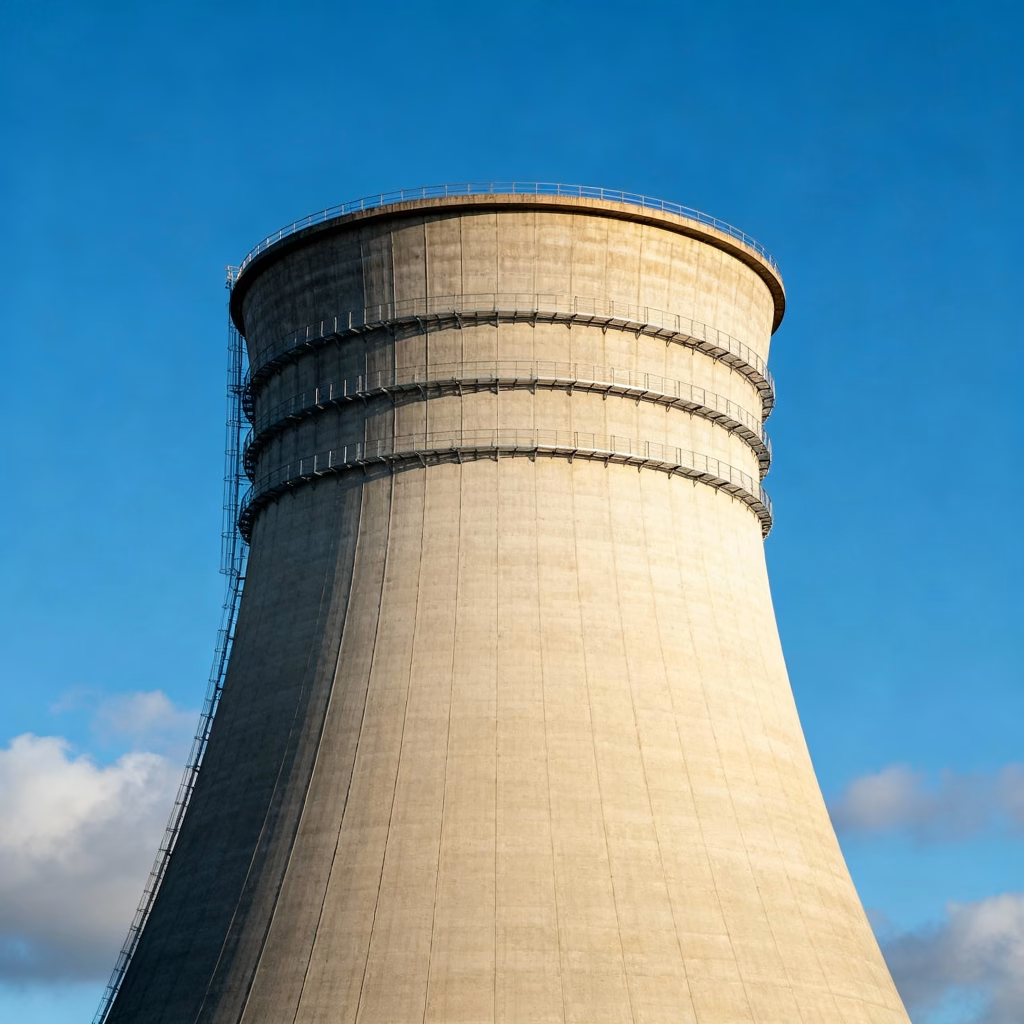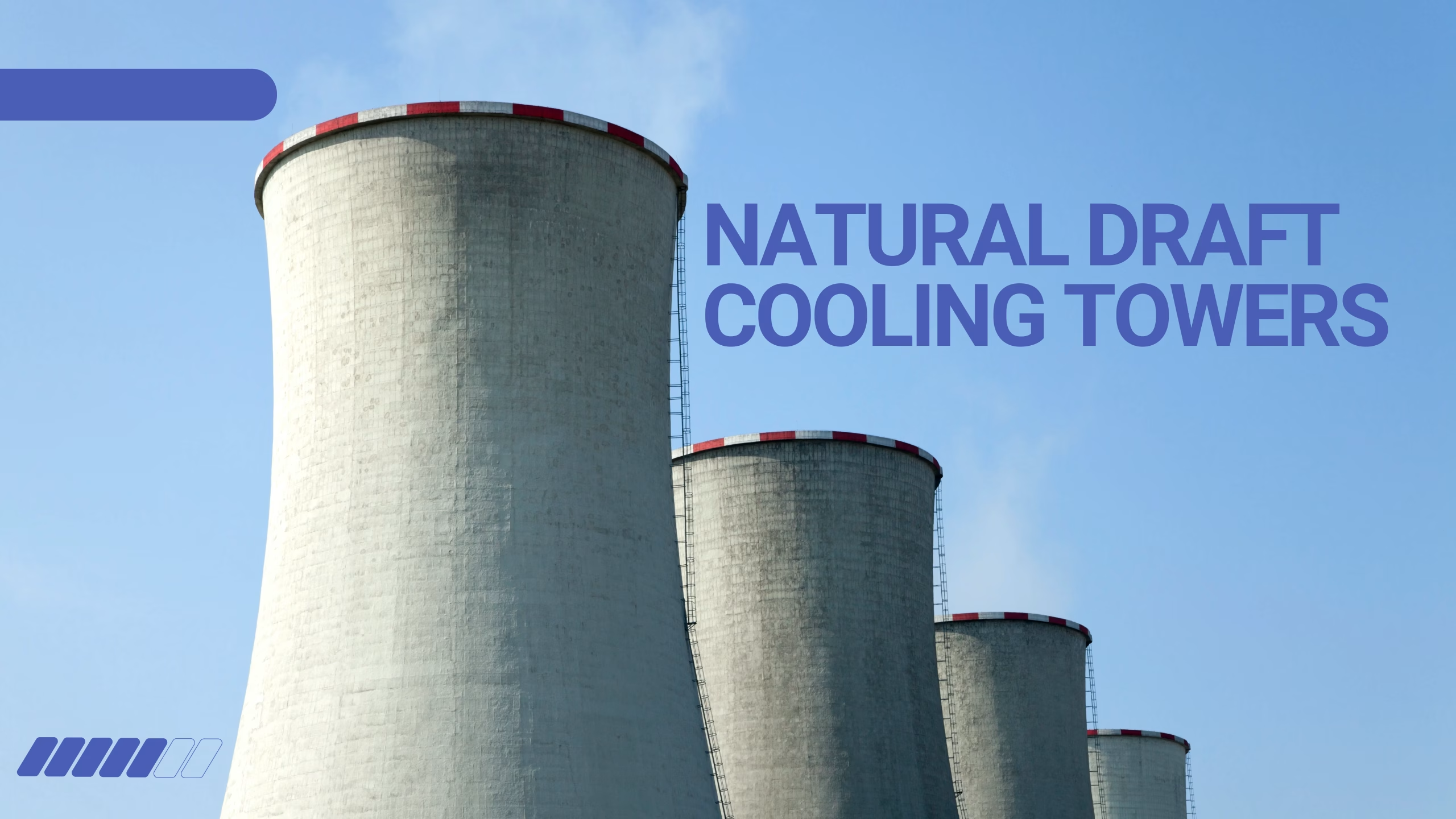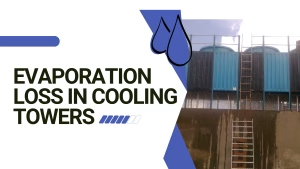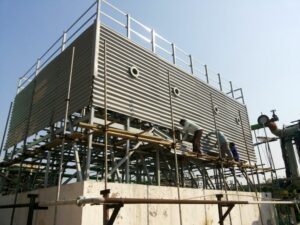Natural draft cooling towers are engineering structures known for their energy efficiency and operational reliability in industrial facilities with heat loads around 450 MW. These towers are especially significant in sectors like power generation, petrochemicals, and large-scale manufacturing, where continuous and cost-effective cooling solutions are paramount. This blog explores the principle, application, advantages, disadvantages, and leading manufacturers of natural draft cooling towers, with insights tailored for those seeking robust solutions from Cooltech Engineers Private Limited.

What is a Natural Draft Cooling Tower?
A natural draft cooling tower is a high-capacity heat removal system that optimizes air flow without relying on mechanical fans or motors. Its iconic hyperbolic shape, often visible at major industrial plants, is designed to enhance vertical air movement, making the cooling process both silent and energy efficient. Water heated by industrial equipment circulates through the tower, where it is distributed across fill media; as cooler outside air rises through the tower, a portion of the water evaporates, carrying excess heat away.
The simplicity behind this technology belies its effectiveness, by using the “chimney effect,” the tower continuously draws fresh air upward, allowing vast volumes of water to be cooled with minimal operating cost. This is one of the many reasons site planners select natural draft models for facilities demanding uninterrupted, high-volume cooling.
Principle of Natural Draft Cooling Towers
At its core, a natural draft cooling tower employs principles of convection and evaporation. Warm water returns from the industrial process and is dispersed over fill material, greatly increasing its exposure to ambient air. As the water trickles down, cool incoming ambient air absorbs heat through direct contact and evaporation, which causes the water’s temperature to drop.
Hot, moist air naturally rises due to lower density, exiting from the upper section of the tower, a phenomenon known as the stack or chimney effect. This process runs indefinitely, powered solely by the natural differences in air temperature and density within the tower. No mechanical fans means less electrical consumption and lower maintenance requirements, keeping operational costs minimal.
Applications of Natural Draft Cooling Towers
Natural draft cooling towers are most commonly found in:
- Thermal power plants
- Nuclear power stations
- Oil refineries and petrochemical facilities
- Large manufacturing complexes
Their design and scale make them ideal for scenarios with substantial heat loads and continuous water demand. In these settings, a single tower often serves the needs of multiple high-energy processes, while regulatory compliance and reliability remain uncompromised.
Advantages of Natural Draft Cooling Towers
Natural draft cooling towers offer several compelling benefits for industrial users:
- Energy efficiency: Absence of mechanical fans leads to lower energy consumption and ongoing savings.
- Low maintenance: Fewer moving parts translate to reduced wear and minimal upkeep costs.
- High-volume cooling: Capable of handling millions of liters of water daily, perfect for large-scale applications.
- Quiet operation: Mechanical noise is eliminated, supporting quieter plant environments.
- Long service life: Robust construction ensures decades of continuous performance.
Disadvantages of Natural Draft Cooling Towers
Despite their many strengths, natural draft cooling towers do come with certain limitations:
- High initial investment: Their enormous, complex structures necessitate significant upfront capital.
- Size and aesthetics: Large footprint and conspicuous appearance may complicate site selection and local approvals.
- Limited flexibility: Not economical for small factories or sites with fluctuating cooling loads.
- Climate sensitivity: Cold environments may require special measures to prevent freezing and maintain performance.
By understanding the principles and applications of natural draft cooling towers, industrial buyers and engineers can make well-informed decisions for their long-term cooling requirements. Cooltech Engineers supports these customers by providing not only customized cooling towers such as natural, induced and forced draft types but also a comprehensive range of durable, energy-efficient cooling tower components, such as FRP fans, treated wood sections, gearboxes, and nozzles that help extend equipment life and optimize system performance. This combination of product expertise and quality parts supply positions Cooltech as a trusted partner in delivering continuous, cost-effective industrial cooling solutions.





